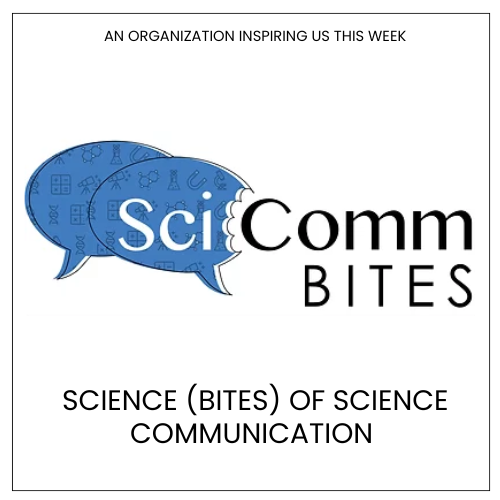Civic Science Observer
Questions about ensuring quality assurance for your participatory science project? US government websites can help

Looking for more guidance in creating a quality assurance framework for your participatory science project? The U.S. Environmental Protection Agency (EPA) has a suite of tools that may be able to help. Indeed, the EPA’s tools for quality assurance are just one of many offered by the U.S. federal agencies seeking to encourage and promote federally-supported participatory science research initiatives.
The federal agency’s interest in helping participatory science research projects began more than five years ago, when a group of the EPA’s staff voluntarily created a quality assurance handbook to assist a participatory science project occurring at that time in EPA’s Region 1, which encompasses New England.
Since then, the agency’s staff has added more resources for researchers, including videos on how to develop a quality assurance regimen for a research project and information on loaning equipment and finding funding opportunities.
“You can have some fun new toy that does something, and it’s really cool. You can have an app on your phone. You can buy a little kit, apply it in your neighborhood, and coordinate with others. But by using this planning process [as described in the handbook] and then documenting the plan, it provides the structure for how to use that information”, Nora Conlon, a quality assurance chemist for EPA Region 1, told Civic Science Times. Conlon, who has a Ph.D. in chemistry and has worked at the EPA for nearly 30 years, was involved in creating the agency’s handbook for citizen science, which EPA now calls “participatory science” to encourage inclusion.
Conlon and others became involved in voluntarily creating this suite of tools because there was a lot of interest in participatory science, but there were also questions about data quality.
“When you have a single data point, you don’t know what that actually means until you put it in context of how it was collected, how it was analyzed, what it was supposed to do,” Conlon said. “Using a quality assurance project plan helps you set up the parameters for what you’re doing.” Such a plan might enable a project to collect data that has a better chance of being usable, she said.
The quality assurance handbook that Conlon helped produce is addressed to participatory scientists but is also useful for researchers involved in such a science project that involve local communities. The handbook provides templates that follow quality assurance procedures similar to those already in use by professional scientists. Some of the steps in the handbook include: developing a hypothesis as well as plans for collecting data, knowing when to finish data collection, and then understanding how the data supports the project goal are just some of the steps described in the handbook.

“By providing the tools that help support the collection of information, you can rely on the data that was generated by someone,” Conlon said.
The EPA isn’t the only federal agency that is actively involved in participatory projects or that has resources for citizen scientists.
The National Oceanic and Atmospheric Administration (NOAA) says it is involved in dozens of projects for people to engage in scientific investigation, such as monitoring sea water levels, marine debris or phytoplankton.
NASA has numerous participatory science projects, and, like the EPA, has a robust collection of resources to help citizen science projects take off.
The space agency created a NASA Citizen Science Program Handbook in October 2022 which outlines not only how researchers should develop citizen science projects but also how to comply with regulations and interact with amateur scientists. It also has a resources page to help researchers develop their project frameworks.
“Citizen science simultaneously advances NASA science and NASA’s core value of inclusion,” NASA says in its handbook.
“NASA’s citizen science projects have engaged more than 2 million volunteers and resulted in thousands of scientific discoveries and numerous scientific publications. More than 410 citizen scientists appear as named co-authors on refereed scientific publications as a result of their work on NASA citizen science,” continues NASA’s citizen science handbook.

Other resources from the federal government include a recording of a March 2023 event co-sponsored by the Citizen Science Association entitled “A Conversation on the Federal Funding Landscape for Citizen Science,” a clearinghouse of federally-sponsored citizen science projects seeking citizen participants, a toolkit for how researchers can get started in developing a citizen science project, and a resource library for researchers.
While there are no immediate plans to update the participatory science resources on the EPA’s website, Conlon encouraged those who might find the tools useful to contact the EPA and give them feedback.
“We want all of these tools to be useful and helpful. So if there’s any feedback, that would be a good thing,” Colon said. “The real bottom line to me is to help people plan a project so that they get out of it what they put into it. We want projects to be successful, and so planning them helps with that.”
Joanna Marsh is a freelance writer and journalist based in Washington, D.C. For The Civic Science Observer, she reports on new developments across the citizen science landscape, covering both new research and on-the-ground practice. Her work highlights how local communities are engaging with scientists to contribute to ongoing scientific research and lessons being learned by the involved stakeholders.

-
Civic Science Observer4 weeks ago
What are the objectives of the Neurotech Justice Accelerator at Mass General Brigham?
-
Civic Science Observer2 months ago
Dear Colleagues: Now is the time to scale up public engagement with science
-
Civic Science Observer2 months ago
Weekend Watch: At Boston College, the McMullen Museum of Art presents “Wonders of Creation: Art, Science, and Innovation in the Islamic World”
-
Civic Science Observer3 days ago
Dear Colleagues: Help us understand the national impacts of federal science funding cuts on early career researchers in academic laboratories





















